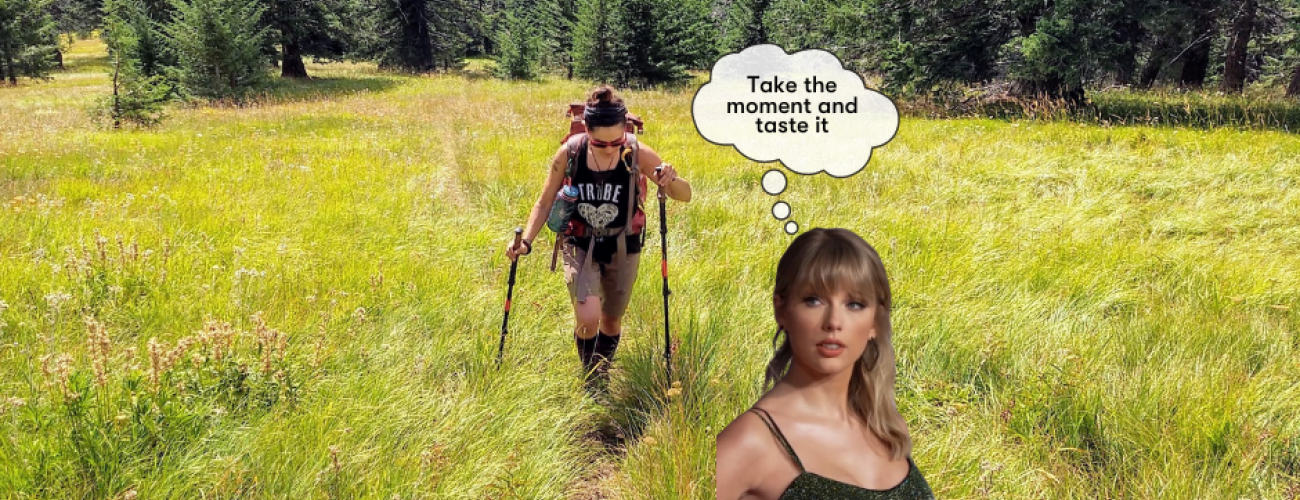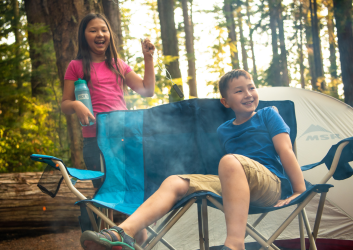File name: Solo Hiking, a message from the desk of Taylor Swift
You're on your own, kid.
So, you want to hike solo? We’re taking notes from Taylor Swift (in honor of her new album release) about how to be fearless on the trail by yourself.
Hiking alone can be freeing, meditative, empowering and exhilarating. No small talk, no keeping up with faster hikers, no managing people’s blisters or break schedules. It’s just you and your backpack on the trail as you keep cruising, can't stop, won't stop moving and connecting with nature.
Our state parks are perfect places for those who are Down Bad for a solo hike. Most of our trails are maintained and, while you can go for miles on a thru-hike like Palouse to Cascades or Klickitat Trail and piece together long loops at Moran or Mount Spokane, you’ll almost never be in the backcountry.
But hiking alone, even at WA state parks, requires next-level safety checks and practices to get home safe and sound – and pumped to do it again!
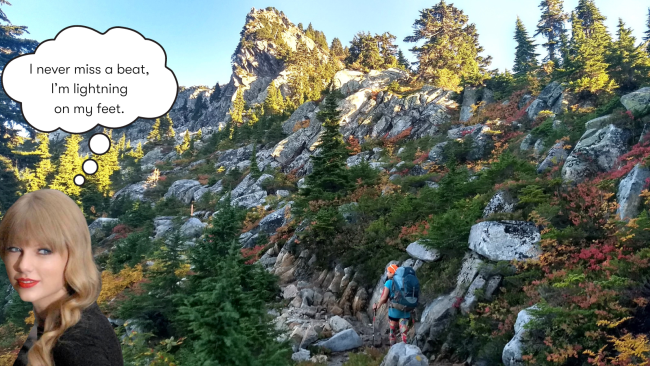
The Manuscript for your solo adventure
Before you say So Long, London, leave a plan that includes your route and an ETA with family or friends. Remember to call or text them when you’re off the trail and safely back in your car. (Tell them, “In this moment now capture it, remember it.”)
- Include an overdue time: A buffer period after your ETA in case your hike takes a little longer than you expected. During this period, your person should be watching their phone for an update but shouldn’t worry yet.
- Include a “panic time”: This is when the folks at home should call 911 and report you overdue.
Example: I will be doing an out-and-back hike on the Woody Trail to the Upper Falls at Wallace Falls State Park. I plan to be back in my car by 4 p.m. and will text you as soon as I’m there. If you haven’t heard from me by 8 p.m., please call 911 and report me overdue.
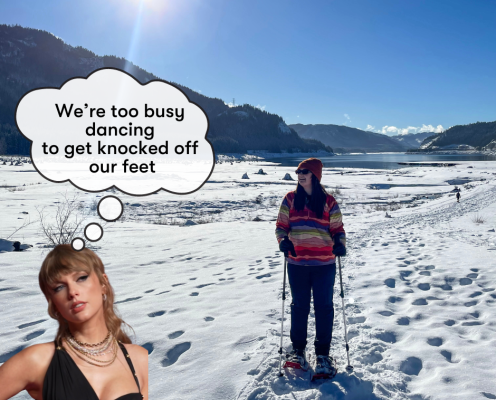
- Check for alerts, weather and road conditions before you go. The weather around here can change from sun to snow in an instant – this isn’t Florida!!! A stormy day isn’t the best time to go it alone. Consider postponing your adventure for a better weather window.
- Carry (and know how to read!) a physical map and/or use a GPS service to download an offline map to your smartphone.
- We encourage you to also bring a portable battery pack to recharge your phone, so you never miss a beat.
- Bring an in-reach or other satellite device that doesn’t require cell service to send an SOS (and make sure it’s charged up!).
- If you have a phone app that will pair with it, pair them before you head out.
- If you get lost, first you need to calm down. After you activate the SOS on your satellite device, don’t move.
- You can plan for a change in weather and time by carrying all the gear you need for your trek – and enough to survive a night out in case you are lost or injured. That includes the 10 Essentials and maybe a sleeping bag, sit pad or emergency blanket.
- Even if you find yourself thinking But Daddy I Love Him, don’t try to pet or feed the wildlife. Use our wildlife encounters blog for more info.
- Know your limits and respect the risks. You do not want to find yourself thinking me and my stupid pride are sitting here alone. We’ll say it again because we really want to drive this point home: Sometimes, givin' up is the strong thing, Sometimes, to run is the brave thing, Sometimes, walkin' out is the one thing That will find you the right thing.

And you wanna scream, ‘don't call me kid, don't call me baby
Asking for support from your loved ones isn't weakness. If anything, it’s a sign of outdoor literacy and respect for the risks.
Solo hikes can be rewarding, but you should be aware of the hazards and make sure you’ve prepared yourself and your family by letting them know where you are going, what trail you plan to take and when you should be back.
You’ll ease most of their worries if you can honestly say:
- I have – and can read – a map.
- I have survival gear, including the 10 Essentials.
- I’ll turn around if things get sketchy or weather moves in.
- I’ll share my location, send you a waypoint or GPS track.
- Here are some trip reports about my route at wta.org and alltrails.com.
Are we in the clear yet, good.
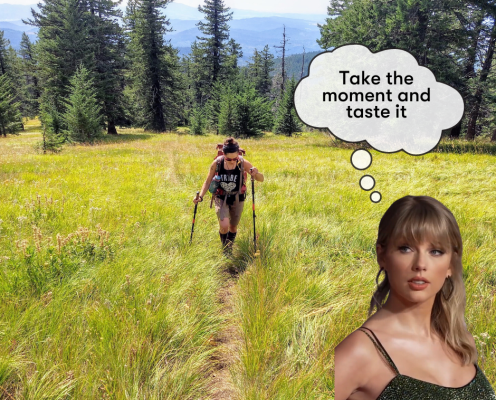
Breathe in, breathe through, breathe deep, breathe out. (Dealing with the human factor and advice for others on the trail)
When you’re solo hiking, your senses — and sensitivities — are often heightened. As much as you want to relax and take in the scenery, you’re on higher alert than usual. You might even catch yourself realizing the monsters turned out to be just trees.
Most hikers you meet on the trail aren’t trouble, trouble, trouble. They may try to be friendly and commiserate about the trail grade or distance. And if you're passing a solo hiker, you might be thinking Who’s Afraid of Little Old Me? However, when you’re alone, it can change the way conversations or encouraging smiles are received. To that point, asking someone if they’re hiking alone can be scary for that hiker even if it was meant with admiration.
Since most soloists crave alone time, less is often more when passing by or stopping to chat during break. A tip for anyone trying to be friendly is to share a simple, “Hey, how’s it going?” or, “What a beautiful day!” It will go a long way.
Still, never set aside your safety for politeness. If you're hiking alone and have an interaction that makes you uncomfortable or nervous, please turn back and make for the trailhead. If you’re in a state park, find park staff and let them know immediately.
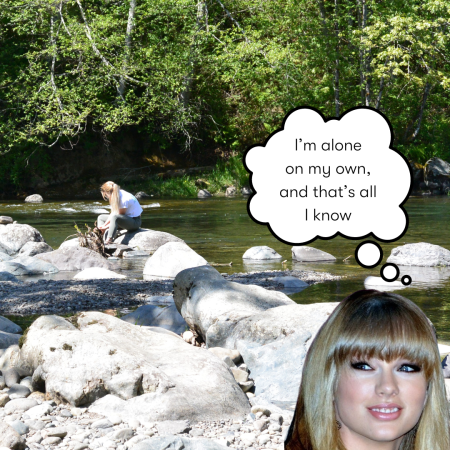
You’ve got no reason to be afraid.
Solo hiking is not for everyone, and that’s okay! If you’d rather dance down the trail with your friends, or have the best day strolling with your mom, you can still scream long live all the magic we made at a Washington state park.
Who knows? This could be the start of something you never imagined in your wildest dreams!
Originally published March 26, 2024

